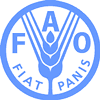 |
|||||||||
|
|||||||||||||||||||
|
|
Wheat Rust Tracking Site Launched 2010-06-03 FAO has launched a new website to track the advance of Ug99 the devastating strain of wheat stem rust disease and other wheat rusts amid concern the fungus is on the march across Africa and could head toward South Asia.
The aim of “Rust SPORE” is to deliver up-to-date information on the status of wheat stem rust, monitor important new strains of the disease and synthesize and provide easy access to reliable data on a global scale. The information is retrieved from field data provided by national surveillance teams in cooperating countries that have been trained in using harmonized surveillance protocols and forming an international rust surveillance network. The recent report of the spread of a virulent Ug99 variant into South Africa has raised further concern about the spread of this disease, which presents a severe threat to the world’s wheat crops. There are currently seven recognised variants of the strain to which 90 percent of global commercial wheat varieties are vulnerable. Centuries old problem Throughout recorded history fungal rust diseases have been a recurring threat to wheat crops worldwide. Three rust diseases — stem (black), stripe (yellow) and leaf (brown) rust — are the most economically damaging diseases affecting wheat production. However, recently there has been an escalation in the threat posed by both stem and stripe rust. “Emergence of the Ug99 races in East Africa transformed stem rust from a disease largely under control into a significant global threat,” said David Hodson, FAO’s international focal point for wheat rust disease. “Ug99 is like the flu virus, it evolves continuously. The continued spread of Ug99, and the appearance of new variants that have broken down even more key resistance genes is increasing the danger it poses. Carried on clothes Wheat rust moves by the wind but can also be carried on clothes or in plant matter and the worry is it can jump continents by an unwitting human carrier. Wheat rusts including Ug99 are one of the main topics under discussion among wheat rust experts from developed and developing countries gathered at the 8th International Wheat Conference in St Petersburg, Russia (June 1-4) organised by the Borlaug Global Rust Initiative (BGRI). Rust SPORE is part of FAO’s Wheat Rust Disease Global Programme and an important part of the BGRI efforts to mitigate the effects of wheat rust diseases globally. First discovered in Uganda in 1999, the original pathogen of Ug99 has been confirmed in Ethiopia, Kenya, Sudan and Iran; variants of the disease have now been recorded in Kenya, Ethiopia, South Africa and Zimbabwe. The main aims of coordinated international efforts are surveying and monitoring pathogen changes, developing new resistant varieties, supporting countries in their preparedness and the quick seed multiplication of resistant varieties and support to farmers for changing varieties. Agressive yellow strains Another global concern is the recent detection of new very aggressive strains of yellow or stripe rust that are crossing continents and getting established at an extremely rapid rate, causing serious outbreaks in many countries. These new stripe rust strains pose an additional threat to wheat production since they are adapted to warmer temperatures, previously limiting the occurrence of yellow rust in cooler areas. “This year millions of dollars in crop losses are likely because of yellow rust outbreaks in the Middle East, Central Asia, Caucus and North Africa,” said Hodson. Rust SPORE information system is presently focusing on stem rust and Ug99, but will be expanded to incorporate other wheat rust threats in the near future.
|
||||||||||||||||||

|
|
||||||||||||||||||
| home | agri-services | pedigree
pen | news | dairy | beef | machinery property | organisations | site map |
|||||||||||||||||||


